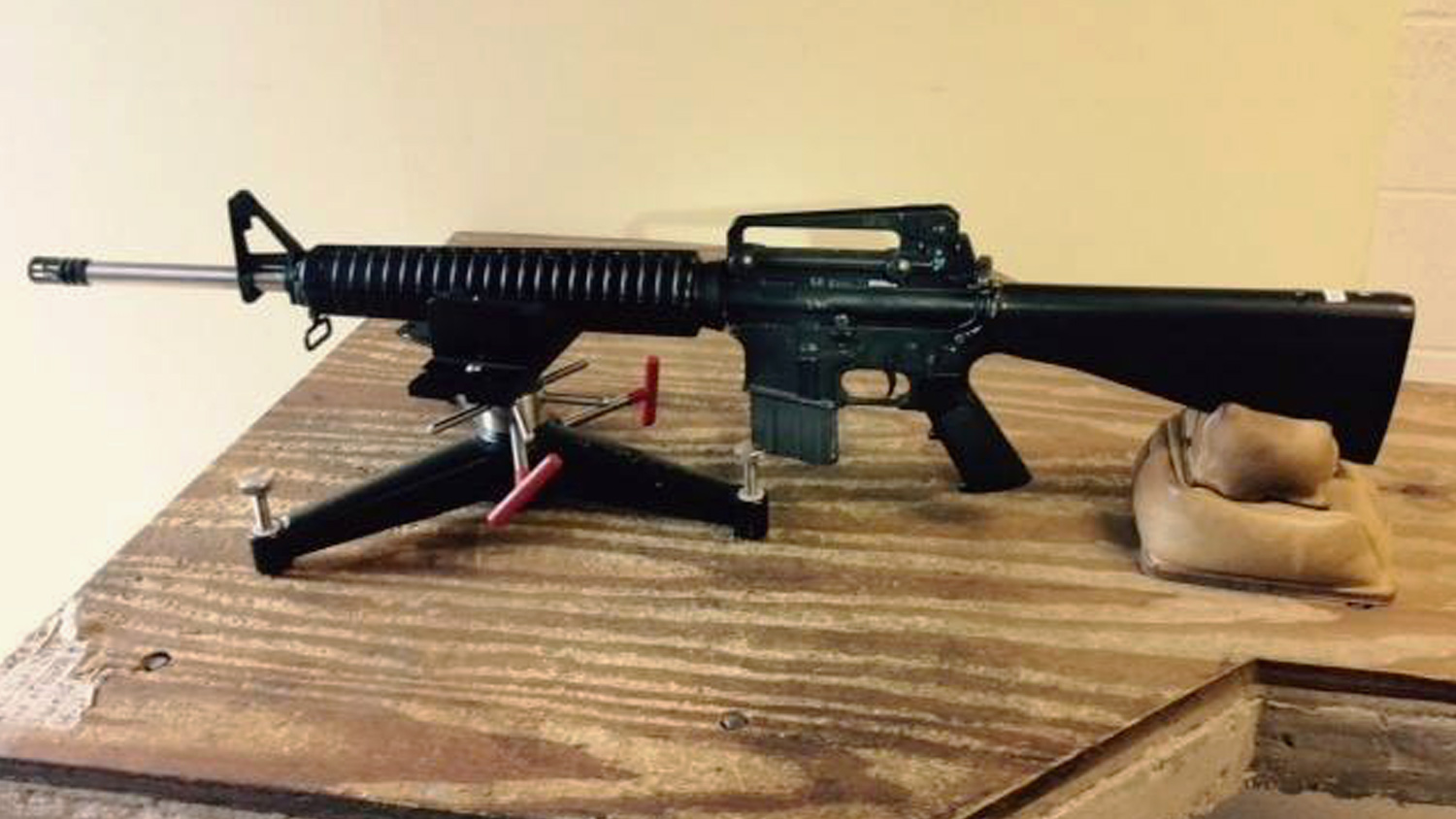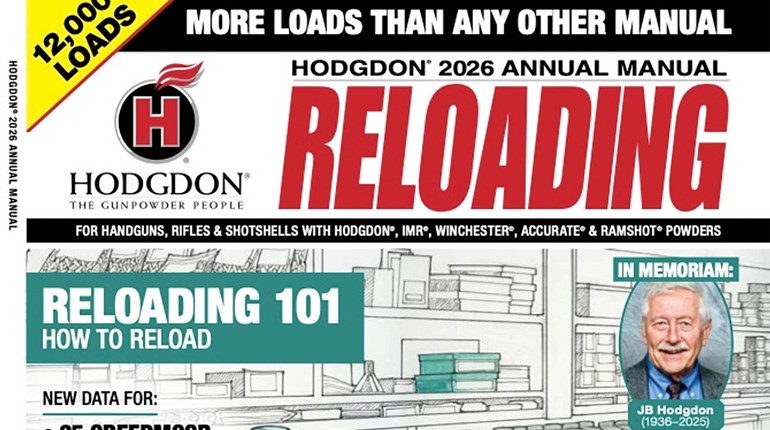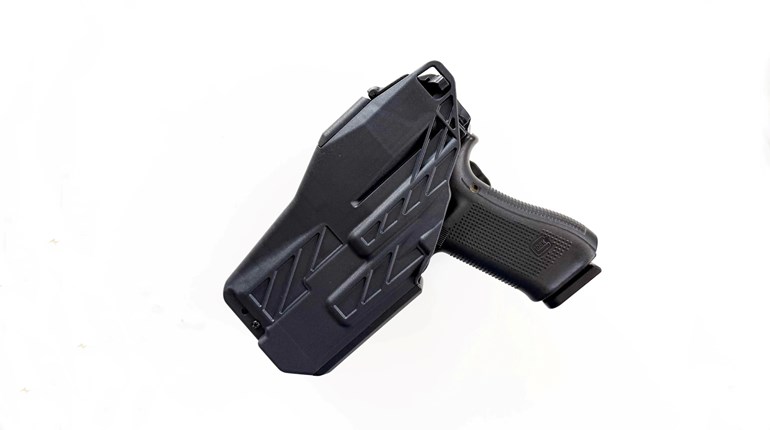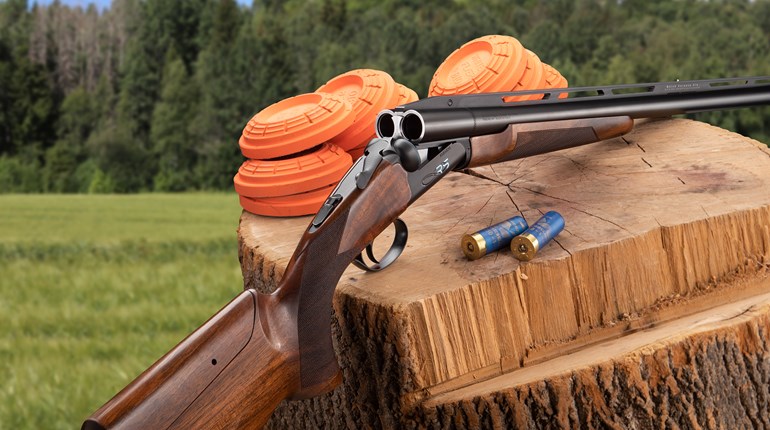
WARNING: All technical data in this publication, especially for handloading, reflect the limited experience of individuals using specific tools, products, equipment and components under specific conditions and circumstances not necessarily reported in the article and over which the National Rifle Association (NRA) has no control. The data has not otherwise been tested or verified by the NRA. The NRA, its agents, officers and employees accept no responsibility for the results obtained by persons using such data and disclaim all liability for any consequential injuries or damages.
Above: Remember these? An ancient artifact dating to the Late Iron Age.
The U.S. Army Marksmanship Unit’s (AMU) Handloading Hump-Day series on their Facebook page features a recurring character, “That Guy,” that is achieving his own unique stardom. And, for good reason. Readers have requested more articles featuring the character. Each article so far has illustrated handloading issues via spectacular misadventures, which leads us to this article. While not specifically devoted to handloading, per se, it does answer an intriguing exterior ballistics question. A major goal of precision handloading is to add points to the competitor’s scores, edging them ever-closer to victory. This article works toward that same goal, but from a different direction. It offers a hard-won nugget of wisdom which may someday prevent catastrophe for readers.
For those who haven’t competed in it, the yearly President’s Hundred match, held at the National Championships, is a very prestigious Service Rifle (and Service Pistol) event. There are no distinctions drawn between competitors vying for top honors―Marksmen compete against High Masters, and Distinguished Riflemen compete toe to toe with the Non-Distinguished in a pure test of skill. The top 100―in a match that might draw 1,100 to 1,500 participants―earn the coveted “President’s Hundred” award and tab, which can be worn on the military uniform. Added pressure in this match comes from two special factors: it is held only once a year, so one’s opportunities to earn the award are limited, and as with Service Rifle EIC matches, no sighters are allowed.
The course of fire is simple: 10 shots offhand, standing, at 200 yards; 10 shots prone rapid fire at 300 yards, and 10 shots prone slow-fire at 600 yards. The tales of competitors who posted beautiful, tiny 10-shot groups sandwiched between the edges of the 300-yard “9” and “10” rings are legion. Doping the wind correctly is especially critical in this event, and one significant mistake in the match generally ends one’s hopes for success until next year. Thus, the opportunity to develop “match pressure” is significantly enhanced.
The incident recounted here occurred in the late Cretaceous Period of the Mesozoic Era. Dinosaurs, such as the National Match M14 and M1A, were not yet fully extinct, but the newer, more advanced species of Service Rifle (the AR15) was rapidly establishing total dominance of the landscape. Still, certain traits of the Ancient Ones―primarily the exclusive use of Iron Sights (hence the name, “Iron Age”)―remained immutable. The eyewitness to this debacle described it:
“The President’s Hundred that year was characterized by a monsoon-like rain and howling winds which threatened to cancel the event. I was partnered with a very nice young shooter, who was shooting good scores with his AR15.”
“He had good scores in both Offhand and Prone Rapid, which augured well for his earning the coveted President’s Hundred tab. Only a major malfunction could derail him at the 600-yard line, and that seemed unlikely. The match was interrupted for 3 hours due to heavy rain, high winds and target damage. Undaunted, however, we duly re-assembled on the sodden firing line at 600 yards in our single-minded pursuit of everlasting glory. As we did so, I noticed that my partner had installed a GI muzzle cap on his flash-suppressor to prevent any chance of water entering his bore. Instantly, this triggered one of my long-established Personal Rules of Competition: i.e., NEVER vary from your successful routine during a match, unless you absolutely have to, for the chances of disaster can skyrocket.
As an example, should it rain during an important match and you find yourself considering donning a poncho or rain suit, you should ask yourself one question: “What could go wrong with this idea?” If you have never fired in said poncho or rain suit, you may find that your elbows slip due to lack of traction, and your score suffers terribly. ‘Tis a far, far better thing to fire a 100-7X while soaking wet, than it is to fire a 91-0X and remain dry.
My partner was a particularly pleasant fellow, and as he went prone in the preparation period―with muzzle cover still firmly in place over his flash hider―my every instinct screamed, “Warn him!” However, the President’s Hundred is particularly dependent upon not making performance mistakes. To warn him would have constituted an unfair advantage vs. those competitors who performed flawlessly all by themselves. So, I had to grit my teeth and wait for the inevitable disaster, which was not long in coming. The targets rose, and my partner took careful aim―“BLAM!”
I watched in some horror as his muzzle cover, now neatly perforated by an 80-grain match bullet, was launched about 20 yards downrange. When the target arose from the pits, the result was a “6,” low, dead on at 6 o’clock! The young man, aghast and not quite sure why this had happened, promptly applied a full-value correction. The second shot, not surprisingly, landed in the 6-ring, exactly at 12 o’clock! One thing was certain―he definitely had the right windage! With his chances of success now fading rapidly, he then corrected his elevation and began firing his usual 10s and Xs. But it was too late. The damage had been done.
A small consolation was he answered a vital question of exterior ballistics, one which had long nagged at the technically-inclined among the shooting community. To wit, “How would firing through a muzzle cover affect my trajectory and accuracy at 600 yards?” Later, his teammates ceremoniously presented him with a muzzle cover sporting a bright-yellow flag that projected above the sights as a reminder to “remove before firing.” No doubt, the humor and good fellowship helped to soften the blow somewhat, but―in the end―he still had no tab.
This article, although only tangentially pertaining to handloading, aptly illustrates a principle that might just, someday, add far more points to one’s score than, say, religiously scouring all primer pockets. Always be aware of your actions in competition, and if you MUST change something that has been working well for you, plan in advance to anticipate and alleviate any possible negative consequences! To reiterate our caution from our previous column, be sure to consider the “Big Picture” and your overarching goals, before taking a step that could compromise them!
Enjoy your sport safely, and good shooting!
SSUSA thanks the U.S. Army Marksmanship Unit for allowing the reprint of this article.


































